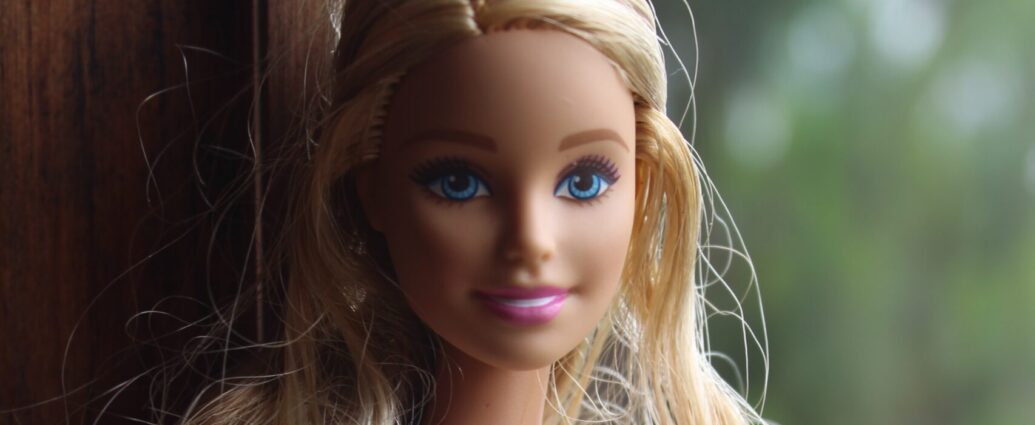Isabelle Shaw
The Barbie motion picture has sold millions of tickets worldwide as moviegoers of all ages donned their fuschia fashions and headed to the cinema to see their favourite childhood dolls on the big screen. But is the pink publicity machine a red flag for hyper-consumerism?
The recent popularity of the Barbie franchise and its associated aesthetic has birthed numerous brand collaborations, along with a plethora of themed merchandise. And yet, the question remains, Would these products have waltzed so easily into our lives if it weren’t for the pink packaging?
Most audience members loved the movie for tackling complex social issues, such as the impossible expectations set for women by the patriarchy. However, the self-effacing movie, along with its $150 million marketing campaign, is a double-edged sword. They continue to remind us that Barbie is a product above all else, criticising the inherent capitalism onscreen but selling more to us offscreen.
Barbie the product
First and foremost, Barbie is a doll. She is a toy designed for children. Over the years, the marketing for Barbie reflects a male-dominated society, making her the ideal image of a woman desired and designed by men. Despite being designed by a woman, Barbie taught girls to dress prettily, while doing everything else.
Whether Mattel intended to encourage young girls to live up to her image or not, it had this effect. Body-size research found that young girls who played with Barbies had a distorted body image and tried to live up to the doll’s standards. The movie reminds us that nobody looks like Barbie (except Margot Robbie). Yet, subconsciously, many women still strive to attain their aspirational bodies.
“Greta Gerwig continues to remind us that we cannot put too much emphasis on a doll”
Mattel promotes a positive, aspirational pink-washed feminism and reconceives it as female empowerment. Whether you wear a dress or suit, you have power Lizzo reminds us on the soundtrack. Women can do everything men are capable of dressed in stunning outfits and matching high heels.
However, endless campaigns with well-known brands remind us that the Barbie franchise derives from a consumer product. Greta Gerwig continues to remind us that we cannot put too much emphasis on a doll, but rather we should look at the world around us. Nonetheless, we should practice this vapid introspection whilst wearing the Barbie logo and hot pink Crocs.
Social media and consumerism
The “Barbiecore” trend has spun out of control. There are thousands of “Style it Like Barbie” videos on TikTok, which include hauls of “Barbie Looks” from popular retailers in the wake of the movie. The surplus of try-on videos makes it evident the movie has started a craze that further consolidates a consumer society. Fast fashion is back in style once again.
The continuation of these micro-trends shows us how the consumerist movement is self-fuelled, especially on apps like TikTok and Instagram. We all love thrifting and capsule wardrobes – until we need a brand new outfit to watch the Barbie movie in. We create the problem we love to hate.
@ronhiree Barbiecore>>> #barbiegirl #barbiecore #pinkoutfit #styleinspo #outfitideas #fashiontok #fyp #mostviralvideo #barbie
The rise of “Barbiecore” encourages conspicuous consumerism on social media as it promotes the idea of buying into the whole Barbie package. Whether it’s hot pink sweats from H&M and Primark, or renting out the Malibu Ken Dreamhouse, capitalism helps consumers idealise the Barbie lifestyle. Live your dream life! As long as you buy our products, of course.
Diversity Sells
Associate Professor Lauren Guerrieri, Senior Lecturer in Marketing at RMIT University, has argued that Barbie has set a trend for brands utilising social justice to increase the consumption of their product.
Only a few years before the release of the successful motion picture, the Barbie brand was in a financial crisis. Sales plummeted in 2015 following the rise of the body positivity movement. The Barbie doll came to represent the impossible beauty standards and narrow, outdated ideals. In response to this backlash, Mattel launched a new range of diverse dolls with different body types, sizes and skin tones.
In light of their commitment to inclusive values, Mattel executives decided to give their new strategy the code name Project Dawn. This pivot marked a brand-wide inclusion transformation. Barbie sells dolls of all ethnicities, cultures, and disabilities, so long as there’s a market.

Mattel has continued to combat criticism by maintaining an ethos of inclusive consumerism. This approach ensures that the Barbie product evolves alongside changing cultural tides. For example, earlier this year, Mattel launched a Barbie doll with Down’s syndrome to help more children find a doll that represents them.
The Barbie movie marks the culmination of a campaign to portray Barbie as an empoword woman, whatever this might look like. She works in medicine, politics, and science and looks pretty! There is also a plus-sized Barbie, a Barbie in a wheelchair, and President Barbie is a Black woman.
Feminist Movie?
Mattel has maintained that Barbie is not a feminist movie to avoid polarization, despite the film’s focus on a range of feminist issues. The movie draws direct parallels with real-world patriarchy and attempts to show how powerless it makes women feel. Despite these candid themes, the film remains self-deriding throughout and feels tongue-in-cheek.
While the movie jokes about how counterproductive and silly it is for Barbie to be managed by rich men, it doesn’t change the fact that it’s reality. The current CEO and Chairman of Mattel is businessman Ynon Kreiz. Notably, there were no quips in the movie about his appearances at fundraisers for the Friends of the Israel Defense Forces.
“Mattel refuses to commit to any message, out of fear of alienating anyone who might buy their products.”
The Barbie movie has set a new trend of politically correct marketing to ensure they don’t lose consumers. It has become a facet of ethical consumption. Users can convince themselves that by buying this product they are supporting social movements. If a Black President Barbie was invented to inspire little girls, would it cost 50 dollars to buy one?
In a bid to improve their brand image, the movie falls short when it comes to intersectionality reflective of a modern consumer society whereby brands tend to capitalise on social injustice. Mattel refuses to commit to any message, out of fear of alienating anyone who might buy their products.
Is the ‘Barbiecore’ trend sustainable?
The rise in conspicuous consumerism has made consumption less sustainable. Previous trends, such as capsule wardrobes and thrifting, have been replaced by influencers buying single-use clothes to see the Barbie movie. Of course, these single-use outfits will no longer be fashionable after the Barbiecore trend’s popularity dies down. Sustainability goals, once popular on social media, have been made redundant with the marketing of Barbie.
“Pink fast fashion is now more important than climate change”
Alan Pears, Senior Industry Fellow at RMIT University, has concluded that buying multiple Barbie dolls when the consumer does not need all of them, has increased plastic use. 60 million dolls were sold annually prior to the movie’s release. No doubt, the number will increase in the near future. Following the success of the Barbie movie, the doll industry is expected to rise to $14 billion by 2027. These sales come with a large amount of plastic waste.
In 2021, Mattel introduced their PlayBack recycling scheme, which allowed families to return their old toys for free so that their materials could be used to create new dolls and other plastic products. Two years prior, the toy company set a goal to use 100 per cent recycled, recyclable and bio-degradable plastics in all toys and packaging by 2030.
However, environmental concerns seem to have taken a backseat for most consumers in the post-movie craze. Pink fast fashion is now more important than climate change.
the consumerism is working because i /want/ a barbie doll
— aisling is editing (@aislinghamill) July 30, 2023
The Barbie movie does well to highlight the numerous challenges women face in modern society. However, its marketing strategies rely on unethical and problematic consumerism. Neglecting the problems that consumerism causes for women, in addition to everything else, is remarkably anti-feminist.
Warner Bros and Mattel have used the Barbie movie to promote the consumption of “Barbiecore” products. The world’s favourite fashion doll has been repackaged in feminist wrapping because that’s what sells in 2o23. The success of the film has caused a dramatic rise in consumerism that could set a precedent for upcoming blockbusters. The aim is to sell the whole brand package, not just the ticket.

